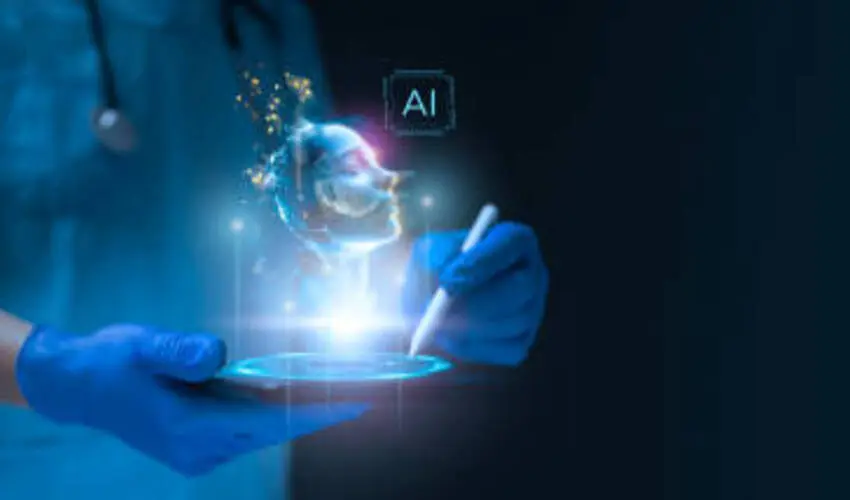In this rapidly evolving healthcare ecosystem, implementing the latest technology is turning out to be a necessity. An AI medical scribe is one of the most exciting innovations reshaping the way medical specialists document patient care. These mechanisms are effective at organizing clinical workflows, decreasing administrative burden, and improving patient care.
Introduction
Nevertheless, all AI scribes are not created similarly. It includes the AI model’s capabilities and collaboration features. It has numerous factors to be taken into consideration prior to making any choice.
Keeping this scenario under consideration, we are presenting to you 6 ways to select the best AI medical scribes.
Highlighting The Significance of AI Framework, Technology, and Transparency
It is always important to comprehend the AI technology when it comes to choosing the best AI medical scribe. The difficulty of the language framework directly affects how efficiently and precisely your scribe can capture difficult clinical information.
The AI reasoning framework incorporates a “chain of thought” procedure. This permits it to break down and resolve difficult tasks at every step, much like a human expert would. Due to standout capabilities, the majority of the healthcare-central AI applicants are selecting to incorporate AI reasoning frameworks into their platforms.
Longitudinal Context For the Entire Patient History
Clinical care is a continuous journey, not just a one-time event. Effective medical scribes can capture not only the details of the present encounter but also any relevant data from previous visits. Your scribe program should permit you to inject particular encounters as context, such as blocks for the present AI scribe experience. Here are some reasons for the significance longitudinal context.
- Holistic patient view
- Efficiency and precision
- Enhanced decision support
When assessing a possible AI medical scribe, make sure it is capable of this longitudinal context. In its absence, you risk fragmented notes that could underestimate care continuity.
Speaker Separation For Precise Transcriptions
In a busy hospital or clinic, various people often speak during a patient encounter, i.e., family members, patient, medical assistants, nurses, and physicians. Your transcripts could become incomplete or muddled if your AI scribe cannot manage speaker separation effectively. Find an AI scribe program that can produce coherent and organized transcripts and notes that appropriately label who said what. This decreases the risk of complexity and guarantees accountability.
Partnership Across The Care Team
Healthcare is teamwork. Administrative staff, medical assistants, physicians, and nurses all play an important role in patient care. For this reason, an AI medical scribe platform should provide multi-user collaboration features. There are some techniques in which collaborative workspaces can enhance patient care:
- Shared Workspace
- Streamlined Communication
Hyper-Customization For Specialty-Specific Requirements
All specialties are not the same. Whether you are a pediatrician or an orthopedic surgeon, your note structure can greatly change. Find an AI medical scribe that will permit you to tailor each particular unit or header of the complete clinical note, entailing macro invocation, your own particular instruction per header. There are numerous benefits to such hyper-customization:
- Tailored Templates
- Reduced Training Time
- Better Compliance
Fortified Integrations, Webhooks, and APIs
In the period where there are interconnected software mechanisms, your AI medical scribe solution must be able to communicate effortlessly with other digital tools like Google Workspace, billing software, and electronic medical records.
By incorporating app programming interfaces (APIs) and webhooks, you can initiate tasks upon finishing a recording, for example, automatically sending a referral letter through Gmail, upgrading a spreadsheet on Google Sheets, or planning follow-up appointments in Google Calendar. I have found that this sort of integration reduces repetitive manual tasks. This lets healthcare workers concentrate on patient care instead of clicking through various systems.
Conclusion
Choosing the best AI medical scribe incorporates more than selecting the extremely recognizable brand name. Find a robust AI framework that excels in reasoning. It is a tool that captures longitudinal context to maintain care continuity, precise speaker separation for clean transcripts, powerful integrations, hyper-customizable note structures, and multi-user collaboration. This is all wrapped in a HIPAA-compliant framework.
Frequently Asked Questions (FAQs)
What is an AI medical scribe?
An AI medical scribe is a software application that utilizes artificial intelligence to document patient encounters, thereby reducing the administrative burden on healthcare providers. It transcribes conversations, generates notes, and integrates with electronic health records (EHRs).
What are the key features to look for in an AI medical scribe?
- Accuracy
- Customization
- EHR integration
- Security
- Support
How do AI medical scribes benefit healthcare providers?
AI medical scribes can:
- Reduce documentation time
- Improve accuracy
- Enhance patient care
- Increase efficiency

